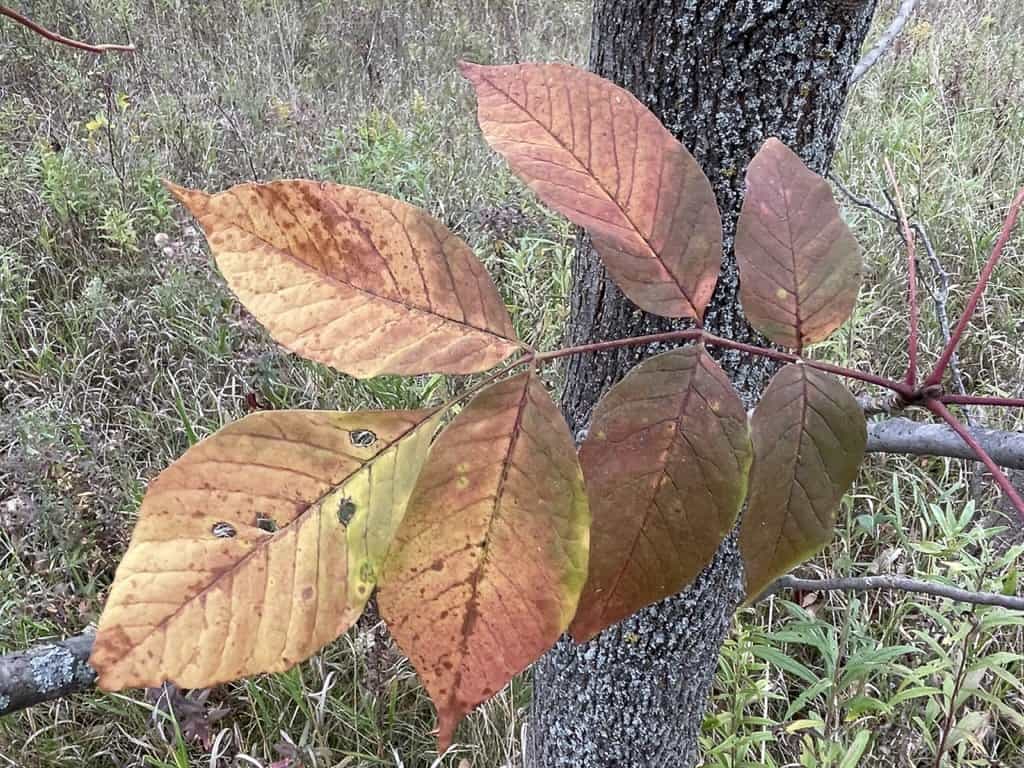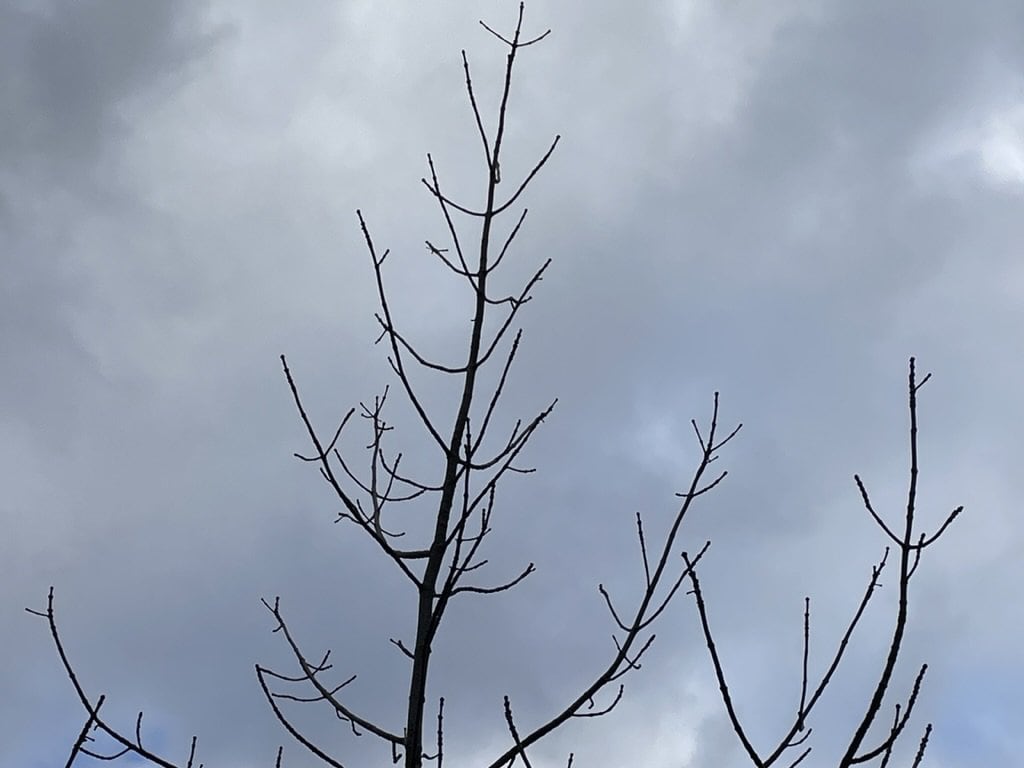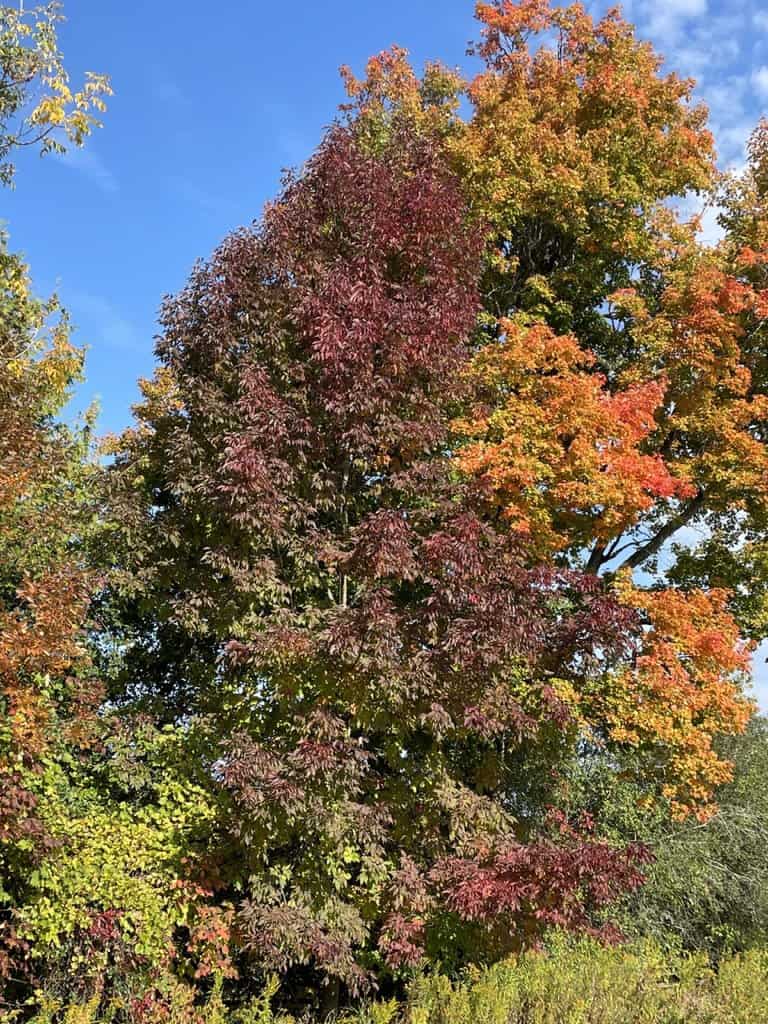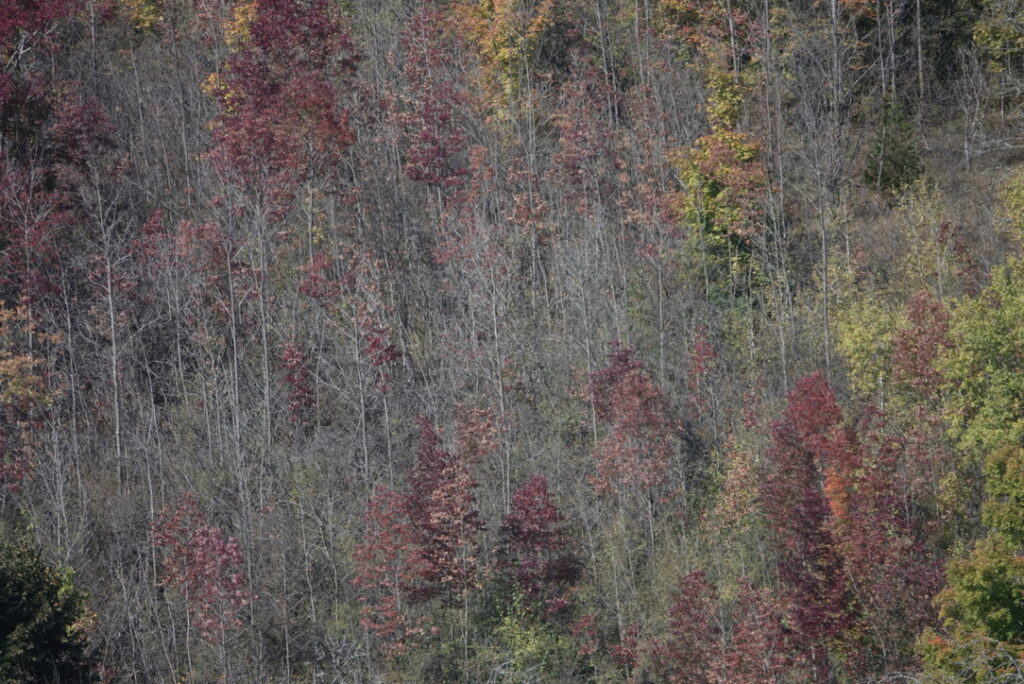Ashes once provided a huge part of our fall colour
Peterborough Examiner – October 13, 2023 – by Drew Monkman
We’ve seen some nice autumn foliage in many parts of the Kawarthas this fall, especially in areas where maples dominate. However, the annual leaf spectacle is not as eye-popping as it used to be. One of the key players – the white ash – has almost entirely exited the stage. Gone with it are the beautiful burgundies and golds it once provided.
The demise of ash trees is almost entirely due to the emerald ash borer (EAB), an invasive insect species that was accidentally introduced to North America from Asia in 2002. Since its arrival, it has killed tens of millions of ash trees in Ontario, Quebec, Manitoba and the U.S. More than 99% of the trees that are attacked by EABs die.
I was reminded of the extent of the devastation just a week ago while driving to Quebec. From Cobourg all the way to Montreal, there were tens of thousands of dead ash along the 401 and Route 20. I remember what a glorious colour spectacle these trees provided in years past. To see their dead skeletons now is heart-wrenching.
A personal loss
For me, the demise of the ash – particularly the white ash – is something quite personal. Allow me to write in the past tense. For me, ashes were no less than mileposts of the changing seasons. When they finally came into leaf in late May, it was a sign that spring’s greening of the landscape was pretty much complete. I also loved to watch how quickly new growth on ashes advanced, with shoots often growing by two centimetres in a single day. It was a testament to the intensity of June sunlight and 15 hour days.
When September arrived, I always kept an eye on a neighbour’s white ash – now a victim of EAB – for the first signs of colour change. Ash was one of the first native trees to change colour, reaching its peak by month’s end. Unsurprisingly, it was also the first tree to shed its leaves.
It’s the white ash’s fall colour, however, that I’ll miss the most. When I was still teaching, I would always make a detour on my drive to school, just to see the dazzling display of colour on a huge ash tree on Water Street, just north of U-Haul Moving. Another of my favourite places was the drumlin behind Lady Eaton College at Trent University. Every year in late September, the hillside glowed with the ash’s bronzy purples, juxtaposed against the reds and oranges of maples. Now, only a smattering are still alive.
A demise felt by many
When I was out birding one day in late September, I came across a white ash that still appeared healthy. In the early morning sunlight, its purple foliage glistened just like I remember from years past. I had to stop to take a photo.
When I got home, I decided to share the photo and some of my thoughts and emotions on Facebook. I also asked people to take a moment to stop and reflect on the tragedy of the ash tree’s annihilation. It’s so important that we don’t allow ourselves to normalize these kind of losses in nature, especially at a time when they’re piling up faster than ever. Here are some of the responses I received.
- “It’s heartbreaking to see the bare trees and limbs in so many woodlots and elsewhere.”
- “These losses make me so very sad. I have a view very similar (to the Lady Eaton Drumlin) on ORCA Land behind my condo. Once it was blazing colour, but now it’s dreary and blah.”
- We have a giant white ash on the front of our acreage. It provides the most beautiful canopy over the road and shades the west side of our yard nicely… Most ash trees around it have gone already, but not this one yet. It really does make me sad. What a loss it will be, and I can’t help but imagine – who will be next? What species will go next?
Identification
There are three species of ash that we used to commonly see in the Kawarthas. They can be easily identified at any time of year. White and green ash usually have seven oval or lance-shaped leaflets that grow on a central stalk. Together, these leaflets form what’s called a compound leaf. Ash leaves are always opposite each other on the twig. Black ash, however, can have up to 11 leaflets. The leaflets of all three species tend to fall one at a time from the tree.
Even when a tree is dead or the leaves have fallen, ash are simple to recognize. The twigs and branches are thick and grow opposite to one another. To me, the twigs look like curved, stubby fingers with lots of daylight between them. The bark of the white ash is ash-gray in colour and, on old trees, has diamond-shaped furrows.
The black ash, which is smaller than the white, is a denizen of swampy areas. Native peoples made baskets from the wood. They would beat the wood with mallets until it split into thin sheets which could be cut into strips. In parks and along city streets, you can also find the similar-sized green ash. This species lacks the radiant fall foliage of the white.


Why does it matter?
There are many reasons to value ash – and any tree for that matter. Ash play important roles in ecosystems. In fall and winter, they are often covered in hanging clusters of paddle-shaped samaras (seeds), which are an important source of food for small mammals and birds like evening grosbeaks. In addition, nearly 300 species of invertebrates feed on ash trees. They, in turn, become a food source for birds.
In woodlots where stands of ash have died, the absence of leaves creates gaps in the canopy. This allows sunlight to reach the forest floor. In many cases, invasive species like European buckthorn and dog strangling vine quickly fill these gaps. Buckthorn are easy to see at this time of year because the leaves remain green until well into November.
Losing trees also has psychological impacts. We’ve already heard about some of them in the testimonies above. There is a huge amount of evidence that natural environments – be they woods, urban greenspace, or even street and backyard trees – have direct and positive impacts on well-being. They act as buffers against stress and help to make cities livable. Put simply, humans feel better in the presence of trees.
There is some hope that ash trees could be reintroduced. Some, like the blue ash, are also showing some resistance to the emerald ash borer. Researchers are also working to reduce the emerald ash borer population to a level that would still allow some trees to survive. Before we get ahead of ourselves, however, let’s just pause a moment to acknowledge what has been lost.
Climate Chaos Update
Encouraging news: Standard climate scenarios are underestimating the uptake of renewable energy technologies and overestimating the cost of the net-zero transition, according to a new paper in the journal Energy Research & Social Science. Those scenarios fail to account for the “plummeting” prices for solar and energy storage over the last decade that “have made a net-zero transition more feasible than current climate scenario models indicate.” The IPCC’s scenarios are also overly pessimistic about the growth rate for solar technologies, the Mercator team concluded, with one 2019 study underestimating their global reach by 2050 by a factor of five to seven. See https://rb.gy/uchtc
Carbon dioxide: The atmospheric CO2 reading for the week ending October 7 was 418.31 parts per million (ppm), compared to 415.30 ppm a year ago. This represents a huge increase in one year. Rising CO2 means more climate chaos and increasingly severe storms, droughts, wildfires and choking smoke ahead.

